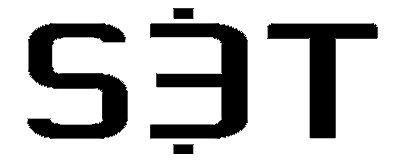S3T Fri Jun 2: Balancing accountability and empowerment

This week we're looking at a very important aspect of change leadership: how to balance between empowerment and accountability when driving change.
"If it saves time, blame me." "I've got your back." "This will be on me." These can be important and assuring words for teams or individuals who are driving change, leading critical transformations and innovating new and better ways of doing things.
Your team needs to know that you've got their back. But as a change leader, you also don't want to signal that results don't matter or that careless mistakes are ok. So how do you walk that line between empowerment and accountability?
Why its good to take the blame
Did you know that when you openly accept responsibility, take accountability, and are not afraid to take the blame, it actually benefits you?
It benefits you in several ways:
- On a personal level, it's actually more empowering. If every problem is someone else's fault, and there's nothing you can do about it, that's a very unempowered place to be. If on the other hand, you are willing to say, Maybe I could have done something better, or maybe I can do something different next time...it puts you in a whole different mental space.
- If you are a leader, openly taking blame and responsibility sets an example for the team - being accountable and being willing to admit errors, accept responsibility and own the outcome.
- In your career, if you consistently accept accountability and are not afraid to take the blame, it puts you in the most decisive space. You're not hiding in the organizational shadows trying to avoid being a target. You're putting yourself out there, and you're testing the organization on this very very important point: Either you are supported and given the platform you need to succeed, Or you're not. You don't have to waste time finding out whether this is the right place for you or not. If you're with the wrong org, wouldn't you rather find that out as soon as possible?
Example
I once told a boss how I'd screwed something up, and I knew it was going to cost us a lot of money. Angry, he pulled out his calculator to add up just how much it was going to cost. When he saw the total he threw the calculator across the room and said "You're costing us a lot of money!"
And he still had my back: He checked to make sure I knew where I'd gone wrong. A week later he gave me another assignment that demonstrated that he still trusted me. I didn't screw up that time.
That was how it was with him. Sometimes there were fireworks. But I always knew where I stood. I'd much rather have that kind of experience, vs one where I never know whether anyone believes in me or not.
(Side note: It's not the 90s anymore. Don't yell and throw things in the workplace. Or anywhere else.)
Translating this to team leadership
Your team members and partners need to know that you've got their back.
Just as companies often need help managing risks (and use insurance) so individuals need a similar kind of protection. Driving change is inherently risky. It comes with uncertainty. Learning curves. Lower margin for error. And it often comes with conflict.
Being the kind of leader who says, I know this may take a few tries to get it right and you have my support, is a great way to empower your team.
The Balance
Now some might say, well sure it's great to tell people they're empowered, but how do you maintain a culture of accountability?
Your team needs to know that you've got their back. But you don't want to signal that results don't matter or that careless mistakes are ok. So how do you walk that line between empowerment and accountability?
Teams need empowerment, but should not be absolved of all responsibility. What's the difference?
The difference is what you're focused on protecting: Are you protecting yourself? or are you protecting those you are committed to serving (like your customers, your patients, etc)?
The right way and the wrong way:
- Right: Focus on how the potential mistakes impact customers, patients, partners or other stakeholders. "I don't want to make a mistake because I don't want something bad to happen to my customer" Plan how to minimize the chance of negative impacts to the customers that we care so much for. This fosters care and conscientiousness. Careful thoughtful innovation. Empowerment and a sense of accountability.
- Wrong: Focus on how mistakes impact me. "I don't want to make a mistake because I'll get blamed." This fosters CYA, scapegoating, and other bad behaviors. Lack of accountability. It's also disempowering, and performance will suffer.
Conclusion
As a change leader, you need to be willing to stand up and take the blame, and assure others that you've got their backs when they face uncertainties that come with change and new territory. Today you've learned how you can instill a team culture of both empowerment and accountability by always remembering: we're not here to protect ourselves, we're here to protect our customers.
Have a great weekend!

P.S. Where will you read and renew this weekend?

Member discussion